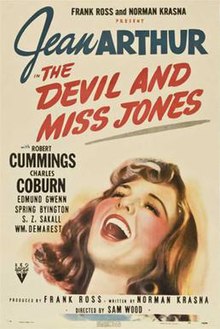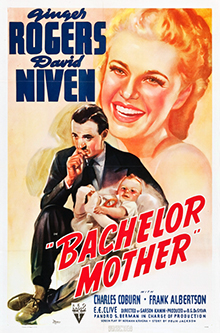
Bachelor Mother (1939) is an American romantic comedy film directed by Garson Kanin, and starring Ginger Rogers, David Niven, and Charles Coburn. The screenplay was written by Norman Krasna from an Academy Award-nominated story by Felix Jackson written for the 1935 Austrian-Hungarian film Little Mother. With a plot full of mistaken identities, Bachelor Mother is a light-hearted treatment of the otherwise serious issues of child abandonment.
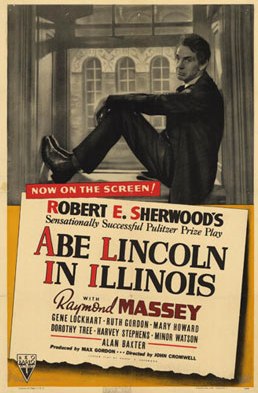
Abe Lincoln in Illinois is a 1940 biographical-drama film that depicts the life of Abraham Lincoln from his departure from Kentucky until his election as president of the United States. In the UK, the film is known by the alternate title Spirit of the People. The film was adapted by Grover Jones and Robert E. Sherwood from Sherwood's 1938 Pulitzer Prize-winning play of the same name. It was directed by John Cromwell.

Ball of Fire is a 1941 American screwball comedy film directed by Howard Hawks and starring Gary Cooper and Barbara Stanwyck. The Samuel Goldwyn Productions film concerns a group of professors laboring to write an encyclopedia and their encounter with a nightclub performer who provides her own unique knowledge. The supporting cast includes Oscar Homolka, S. Z. Sakall, Henry Travers, Richard Haydn, Dana Andrews, and Dan Duryea.
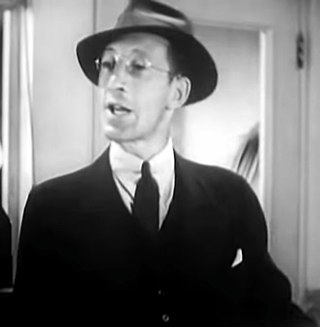
Charles Lane was an American character actor and centenarian whose career spanned 76 years.

Charles Douville Coburn was an American actor and theatrical producer. He was nominated for a Best Supporting Actor Academy Award ("Oscar") three times – for The Devil and Miss Jones (1941), The More the Merrier (1943), and The Green Years (1946) – winning for his performance in The More the Merrier. He was honored with a star on the Hollywood Walk of Fame in 1960 for his contribution to the film industry.
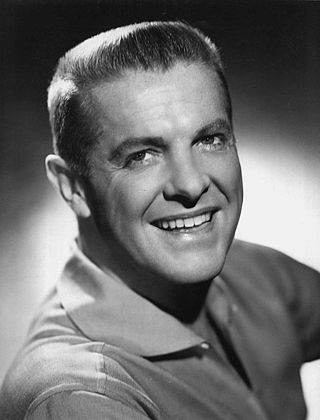
Charles Clarence Robert Orville Cummings was an American film and television actor who appeared in roles in comedy films such as The Devil and Miss Jones (1941) and Princess O'Rourke (1943), and in dramatic films, especially two of Alfred Hitchcock's thrillers, Saboteur (1942) and Dial M for Murder (1954). He received five Primetime Emmy Award nominations, and won the Primetime Emmy Award for Best Actor in a Single Performance in 1955. On February 8, 1960, he received two stars on the Hollywood Walk of Fame for his contributions to the motion picture and television industries, at 6816 Hollywood Boulevard and 1718 Vine Street. He used the stage name Robert Cummings from mid-1935 until the end of 1954 and was credited as Bob Cummings from 1955 until his death.

Mr. & Mrs. Smith is a 1941 American screwball comedy film directed by Alfred Hitchcock, written by Norman Krasna, and starring Carole Lombard and Robert Montgomery. It also features Gene Raymond, Jack Carson, Philip Merivale, and Lucile Watson.

Byron Kay Foulger was an American character actor who over a 50-year career performed in hundreds of stage, film, and television productions.

Edwin Maxwell was an Irish character actor in Hollywood movies of the 1930s and 1940s, frequently cast as businessmen and shysters, though often ones with a pompous or dignified bearing. Prior to that, he was an actor on the Broadway stage and a director of plays.

John Elmer Carson, known as Jack Carson, was a Canadian-born American film actor. Carson often played the role of comedic friend in films of the 1940s and 1950s, including The Strawberry Blonde (1941) with James Cagney and Arsenic and Old Lace (1944) with Cary Grant. He appeared in such dramas as Mildred Pierce (1945), A Star is Born (1954), and Cat on a Hot Tin Roof (1958). He worked for RKO and MGM, but most of his notable work was for Warner Bros.

Lady Luck is a 1946 American comedy film directed by Edwin L. Marin and starring Robert Young, Barbara Hale and Frank Morgan. It was produced and distributed by RKO Pictures. The picture tells the story of a professional gambler who falls in love with a woman who hates gambling and tries to reform him.
Norman Krasna was an American screenwriter, playwright, producer, and film director who penned screwball comedies centered on a case of mistaken identity. Krasna directed three films during a forty-year career in Hollywood. He garnered four Academy Award screenwriting nominations, winning once for 1943's Princess O'Rourke, which he also directed.

Vivacious Lady is a 1938 American black-and-white romantic comedy film directed by George Stevens and starring Ginger Rogers and James Stewart. It was released by RKO Radio Pictures. The screenplay was written by P.J. Wolfson and Ernest Pagano and adapted from a short story by I. A. R. Wylie. The music score was by Roy Webb and the cinematography by Robert De Grasse.
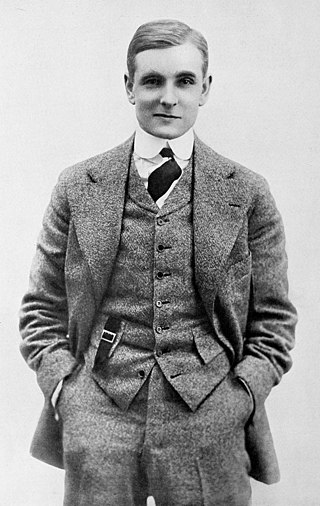
Creighton Hale was an Irish-American theatre, film, and television actor whose career extended more than a half-century, from the early 1900s to the end of the 1950s.

John Archer was an American actor.

A Man to Remember is a 1938 American drama film directed by Garson Kanin, his first film credit as a director. The picture was based on the short story Failure, written by Katharine Haviland-Taylor, and the screenplay was penned by Dalton Trumbo. The story tells of a saintly small-town doctor working under difficult circumstances somewhere in the United States after World War I. The movie is a remake of One Man's Journey (1933) starring Lionel Barrymore.

Nancy Gates was an American film and television actress.

Princess O'Rourke is a 1943 American romantic comedy film directed and written by Norman Krasna, and starring Olivia de Havilland, Robert Cummings and Charles Coburn. Krasna won the 1944 Oscar for Best Original Screenplay.

It Started with Eve is a 1941 American musical romantic comedy film directed by Henry Koster and starring Deanna Durbin, Robert Cummings, and Charles Laughton. The film received an Oscar nomination for Best Original Music Score. The film is considered by some critics to be Durbin's best film, and the last in which she worked with the producer and director who groomed her for stardom. It Started with Eve was remade in 1964 as I'd Rather Be Rich.

William M. Newell was an American film actor.
